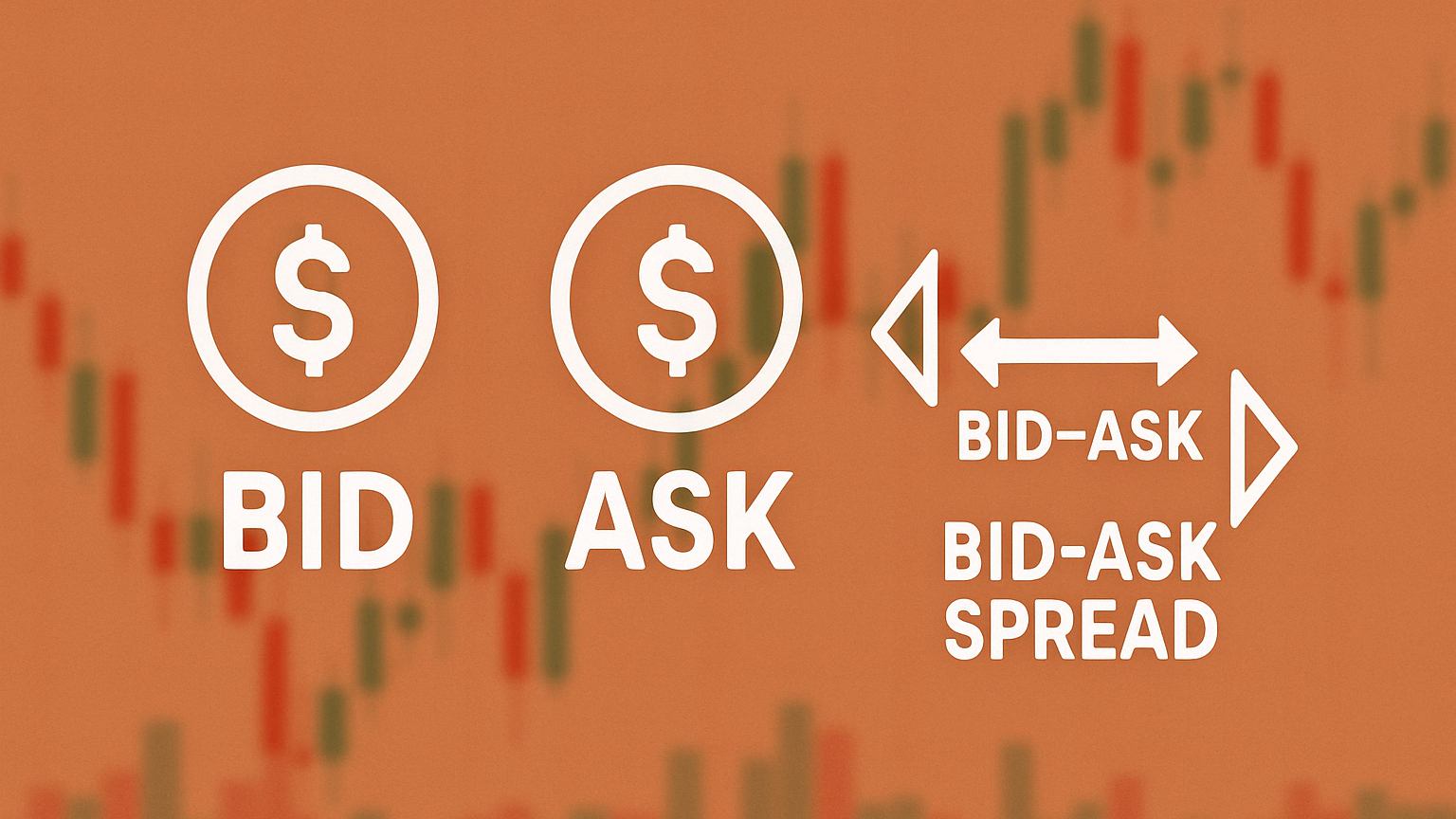Learn how to balance risk and reward through effective scaling in and out strategies, tailored for different market conditions.
Scaling in and out are trading strategies to manage risks and maximize rewards. Here's a quick breakdown:
- Scaling In: Gradually build a position over time instead of entering all at once. Example: Buy small portions of shares at different price levels to average your entry price.
- Scaling Out: Exit a position in stages to lock in profits while keeping exposure to potential future gains.
Key Benefits:
- Volatile Markets: Start small (scaling in) or secure partial profits (scaling out).
- Trending Markets: Add during pullbacks (scaling in) or lock in gains while staying invested (scaling out).
- Range-bound Markets: Average in near support (scaling in) or take profits near resistance (scaling out).
When to Use:
- Scaling In: During strong trends or pullbacks to key technical levels like Fibonacci retracements.
- Scaling Out: In high-volatility scenarios, at resistance levels, or when prices drop below moving averages.
Tools & Techniques:
- Use indicators like moving averages, Bollinger Bands, RSI, or MACD for timing.
- Follow structured position sizing (e.g., 30-40% initial entry, smaller increments for subsequent entries).
- Combine technical analysis with disciplined risk management (e.g., 1-2% risk per trade).
Scaling strategies help balance risk and reward, adapt to market conditions, and improve decision-making. Start small, rely on technical signals, and plan exits carefully.
Should You Scale In/Out of Trades?
Best Times to Scale Positions
Knowing when to scale positions can make a big difference in managing risk and seizing opportunities. The right timing often depends on market conditions and technical signals.
When to Scale In
Scaling in works well during strong trends or in volatile markets. For example, in an uptrend, you might start with a smaller position and add more as the price pulls back to key Fibonacci retracement levels, such as 38.2% or 50%. This approach allows you to enter strategically while aligning with technical signals.
When to Scale Out
Scaling out is especially useful in high-volatility situations where locking in profits while leaving room for further gains is key. A popular method involves using the 10-day exponential moving average (EMA) to guide decisions:
"The 10 day exponential moving average (EMA) is my favorite indicator to determine the major trend. I call this 'red light, green light' because it is imperative in trading to remain on the correct side of a moving average to give yourself the best probability of success. When you are trading above the 10 day, you have the green light, the market is in positive mode and you should be thinking buy. Conversely, trading below the average is a red light. The market is in a negative mode and you should be thinking sell."
This method encourages disciplined profit-taking. Common moments to scale out include hitting resistance levels, seeing volume spikes, encountering overbought conditions, or when prices drop below critical moving averages.
Technical Indicators for Timing
To improve your timing, technical indicators can be a big help. For example:
- The 5-8-13 simple moving average (SMA) setup highlights potential scaling opportunities.
- Bollinger Bands can signal trend shifts when prices break through moving averages within the bands.
- Other tools like moving average crossovers (e.g., 50- and 200-period), RSI, MACD, and volume analysis can confirm trends and fine-tune your decisions for scaling in or out.
Combining these indicators provides a clearer picture, helping you act with more confidence.
Step-by-Step Guide to Scaling In
Finding Entry Points
Use technical analysis to pinpoint entry points. Support and resistance levels are key tools for making scaling decisions. As Nial Fuller, Professional Trader & Author, puts it:
"Support and resistance levels are a price action trader's 'best friend'."
Here are some areas to focus on:
- Horizontal levels: These connect multiple highs or lows.
- Round numbers: These often attract clustered orders.
- Previous swing points: These can act as support during uptrends or resistance during downtrends.
- Trendline confluences: Areas where multiple technical indicators align.
As Fuller notes:
"Trendlines are arguably the most basic charting tool. By connecting different data points, they help identify and detect trends and important price levels for trading."
Combine these levels with volume analysis and candlestick patterns to confirm their importance. Once you've identified solid entry points, manage your position size carefully to limit risk.
Position Size Control
Managing position size is crucial to protect your capital while taking advantage of favorable moves. Many experienced traders follow the 1-2% rule, risking no more than 1-2% of their total trading capital on a single trade.
Here’s a simple breakdown for scaling in:
| Entry Stage | Capital Allocation | Risk Level |
|---|---|---|
| Initial Entry | 30-40% of planned position | 0.5% of total capital |
| Second Entry | 30-35% of planned position | 0.75% of total capital |
| Final Entry | Remaining 25-40% | 0.75% of total capital |
This staggered approach helps you deploy capital strategically while keeping risk in check. It’s especially useful for breakout trades.
Breakout Scaling Example
To scale into a breakout, keep an eye on technical signals and adjust your position sizes accordingly. Here’s a practical approach:
- Initial Position: Start with 30-40% of your planned position when the price breaks a key resistance level.
- Volume Confirmation: Ensure the breakout is backed by increased trading volume.
- Additional Entries: Add to your position as the price shows strength, using the old resistance level as new support.
- Stop Placement: Begin with tight stop-loss orders and adjust them as the trade progresses.
This method ensures you take advantage of strong moves while keeping your risk under control.
Methods for Scaling Out
Scaling out helps lock in profits while still allowing for potential gains as the market moves. Here are some techniques to exit positions while maintaining exposure to further growth.
Partial Profit Taking
Taking partial profits allows you to secure gains while staying invested in case the market continues to rise. Dr. Lester Leong puts it well:
"Taking partial profits is more than a mere risk management strategy; it's an acknowledgment of the market's unpredictable nature."
For instance, imagine you own 600 shares purchased at $20 each, with a target price of $40. Instead of selling all 600 shares at once, you could:
- Sell 200 shares at $39.
- Sell another 200 shares at $39.50.
- Sell the last 200 shares at $39.75.
This strategy results in an average exit price of about $39.42, reducing the risk of missing out on gains if the price falls unexpectedly. It’s a flexible way to manage your exposure as market conditions shift.
Trailing Stop Methods
Trailing stops are another tool for scaling out, adjusting automatically as the market moves in your favor. The key is finding the right balance: stops set too tight might trigger prematurely, while those set too loose could lead to missed profits.
| Stop Type | Description | Best Used For |
|---|---|---|
| Percentage | Trails by a fixed percentage below the price | Volatile markets |
| Fixed Amount | Trails by a specific dollar value | Range-bound trading |
| ATR-Based | Uses the Average True Range to set distance | Trending markets |
| Moving Average | Follows the price's moving average | Longer-term positions |
Trend Trading Example
In a strong trend, a common scaling-out strategy involves setting staggered exit points:
- Sell 25% of your position at the first target.
- Exit another 25% when indicators show the trend slowing.
- Use a trailing stop for the remaining 50% to capture additional upside.
Tools like LuxAlgo's Oscillator Matrix, which provides real-time trend signals and divergence detection, can help refine these exit points. This structured approach lets you lock in profits while staying involved in a continuing trend. Adjust the percentages and targets based on your risk tolerance and the market's behavior.
These strategies can be combined with broader risk management practices to create a well-rounded trading plan.
Risk-Reward Balance in Scaling
Risk-Reward Math
Balancing position size with potential returns is key to calculating risk-reward ratios. For example, traders often risk 1–3% of their account per trade. Let’s break it down: if you manage a $100,000 account and risk 2% per trade, you could allocate your risk like this:
| Entry Point | Position Size | Risk Amount |
|---|---|---|
| Initial Entry | 40% | $800 |
| Second Entry | 30% | $600 |
| Final Entry | 30% | $600 |
This method keeps your risk consistent while letting you build your position strategically as the trade progresses.
Position Size Adjustments
When markets are volatile, adjusting your position size is crucial to safeguard your capital while staying active in trades. Here’s an example:
Imagine a stock priced at $3,200 with a stop-loss at $3,000. The risk per share is $200. If your maximum risk per trade is $20,000 (2% of a $1,000,000 account), your position size would be:
Position size = Risk per trade / Risk per share
= $20,000 / $200
= 100 shares
For even more precision, advanced trading solutions can simplify these calculations and improve your decision-making process.
Using LuxAlgo Trading Solutions
LuxAlgo provides a range of advanced trading solutions that make scaling decisions easier and more effective. The Signals & Overlays toolkit highlights optimal entry and exit points, while the Oscillator Matrix delivers real-time trend signals to help time your scale-ins and scale-outs.
If you’re looking for deeper insights, the AI Backtesting Assistant (part of the Ultimate plan at $59.99/month) is a game-changer. It allows you to:
- Fine-tune entry and exit points across different timeframes
- Experiment with various scaling ratios and position sizes
- Evaluate the performance of scaling strategies before using them in live trades
These features promote disciplined scaling and help you manage risk and reward effectively.
Conclusion: Putting Scaling to Work
Key Takeaways
Scaling in trades requires careful position sizing and a solid understanding of market behavior. Start small – take a fraction of your planned position – and increase it based on clear market signals.
A well-thought-out scaling approach blends technical analysis with disciplined position management. Here's what successful traders often focus on:
| Component | Approach | Benefit |
|---|---|---|
| Entry Timing | Use technical indicators and price action | Helps reduce emotional decisions |
| Position Sizing | Begin small, add positions incrementally | Controls initial risk exposure |
| Exit Strategy | Set profit targets and use trailing stops | Locks in gains while staying open to further profits |
With these tools in hand, you're ready to incorporate scaling into your trading routine.
How to Begin
Start practicing these strategies in a demo account by following these steps:
- Start small: Limit your initial position to a small percentage of your usual trade size.
- Rely on technical confirmation: Trading solutions like LuxAlgo's Signals & Overlays toolkit can help pinpoint the best entry opportunities.
- Plan your exits: Set specific profit targets and break your position into smaller parts for partial exits.
For added confidence, use LuxAlgo's AI Backtesting Assistant to test your scaling strategies in different market scenarios. This will allow you to refine your approach using data before putting real money on the line.







